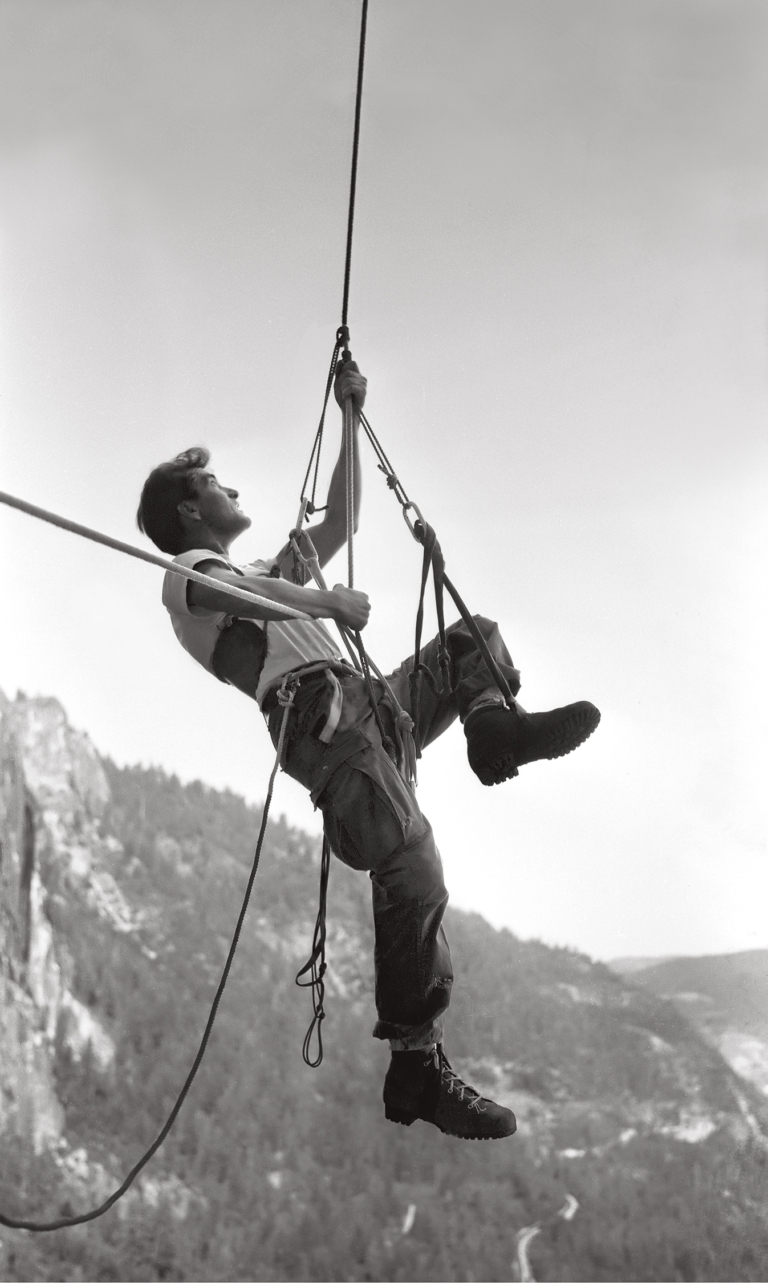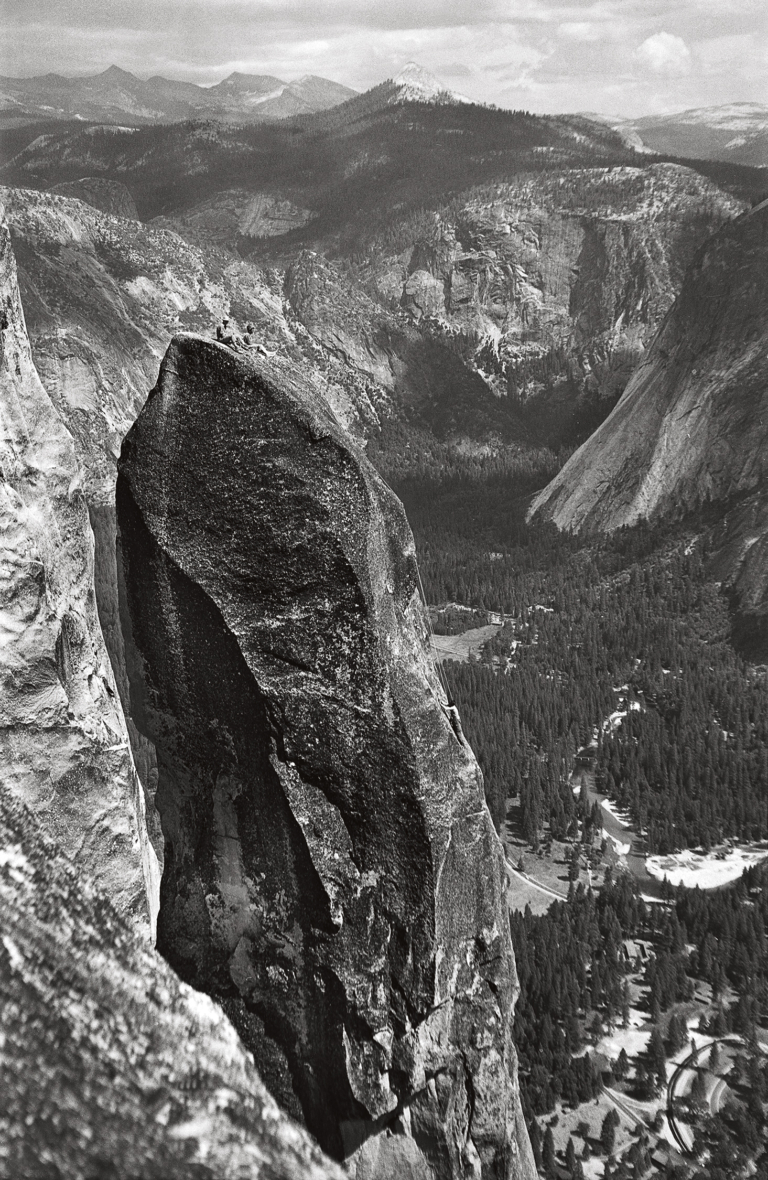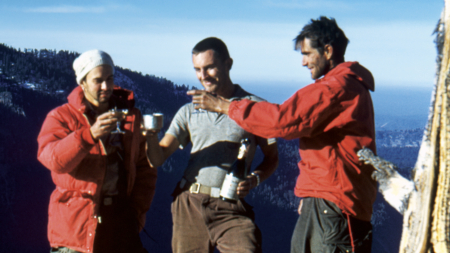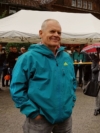Whitmore’s Legacy
This past spring, legendary climber and conservationist, George Whitmore, 89, texted a friend about November 12, 1958, the day he and partners Warren Harding (1924 – 2002) and Wayne Merry (1931 – 2019) completed the first ascent of The Nose route on El Capitan, in Yosemite Valley.
“I am now the last man standing, and the wolves are circling,” Whitmore wrote in his text. “Probably don’t have much time left. In the meantime, I get satisfaction from questing after unreachable stars.” On New Year’s Day, 2021, at a hospice facility in Fresno, California, Whitmore, weakened by complications from COVID-19, finally reached those stars.
Climbing El Capitan ranks with the most unlikely tasks a human can ever do. Even with the space-age technology and Olympic-caliber fitness of modern climbers, scaling El Capitan is never a sure thing. In 1958, it was revolutionary.
Warren Harding, Bill “Dolt” Feuerer and Mark Powell began the climb on July 4, 1957. Whitmore, then 27, and recently discharged from the Air Force, was working as a pharmacist down in Fresno, 92 miles south of Yosemite. As Harding and company slowly climbed higher up The Nose, leaving fixed ropes behind them, Feuerer was so daunted by the exposure, and the unknowns of using gear and techniques often made up on the spot, that he abandoned the adventure at Dolt Hole, 1,000 feet up “The Captain.” Then Powell went down with an ankle injury, leaving Harding without a partner. Wayne Merry, a leading Valley climber, quicky signed on to share the leading; Rich Calderwood was recruited to help haul loads up the cliffside. Whitmore joined the team in September, 1958, with 2,000 feet to go.
Whitmore was a seasoned scrambler and peak bagger who’d climbed mountains in the Andes and throughout the Sierra Nevada, but he had little meaningful experience with cutting-edge rock climbing. Few people did, 64 years ago. However, Whitmore’s fitness, tenacity, steel nerves and his yin for “unreachable stars,” proved indispensable to the team’s ultimate success. “I’ve gone down in the books as having been the Sherpa who hauled loads while the heroes did the climbing,” Whitmore said in a 2016 interview with The Fresno Bee. “But actually, I was on the climbing rope part of the time, pushing the high point. In fact, I would have been up there more, except Wayne couldn’t handle the hauling.”
Freight hauling 100-pound bags (containing bivouac and climbing gear, food, water, etc.) up a big wall is grievous work, even today with alloy ascenders and pulleys, but nothing compared to the nightmare of hauling bags in 1958, which Whitmore was tasked to do, single-handedly, during the final days of the summit push (Calderwood had to bail, in order to save his job).

Warren Harding (circa 1961) on Leaning Tower. Four years later Harding’s rival, Royal Robbins, made the second ascent in a historic solo effort. Photo from Yosemite in the Fifties: The Iron Age / George Whitmore
Only when placed in context can we appreciate the gravity of the team’s effort in first climbing El Capitan, which entailed 47 climbing days spread out over 16 months. When Harding first started up the initial cracks on The Nose, only three Yosemite big walls had been established: the 1,200-foot Lost Arrow, in 1947 (John Salathé and Anton Nelson); the 1,600-foot North Face of Sentinel, in 1950 (Salathé and Allen Steck); and the first Grade VI climb in the United States, the 2,000-foot Northwest Face of Half Dome, in 1957 (Royal Robbins, Jerry Gallwas and Mike Sherrick).
Suitable rock gear was crude or non-existent (both Salathé and Gallwas hand-forged most of the pitons used for their ascents. Whitmore did the same, fashioning big aluminum pitons for The Nose). The ropes were little more than hemp yachting lines. Hiking boots and sneakers doubled as rock shoes. Harnesses were decades away. The means of ascending and descending a fixed rope were makeshift and dangerous as hell. And El Capitan was 3,000-feet high.
A rappeler was not connected directly to the rope, save for the line running through carabiners clipped to his waist strap, which then looped up and over one shoulder, forming a sketchy friction break. If the line slipped on the shoulder and the brake failed, the rappeler plunged the distance. Fixed ropes were climbed via small Prusik knots hitched onto the cord, which they pushed up the rope a few inches at a time. Ascending a single 150-meter rope might take two hours. Whitmore often did so with a haul bag (sometimes exceeding 40 pounds) slung off his waist. This was Whitmore’s principal job, “prusiking” gear up to the highpoint, then bonsai rappelling to a lower camp for more tackle. Then back up once again. It made the leading seem like small beer. Over the course of scaling the final two-thirds of The Nose, it’s likely that in total footage traveled, Whitmore climbed and descended the length of El Capitan three or four times.
A final epic all-night push over the summit headwall was only made possible when Whitmore—battling a storm—prusiked up waterlogged ropes with a fresh supply of drills and bolts, fetched from Camp 6, 650 feet below. Harding donned a headlamp and hammered for eight hours straight, crawling over the top at 6 a.m. Merry and Whitmore followed. The first ascent of El Capitan was a done thing. This historic route kicked off a storied decade, later coined the “Golden Age” of Yosemite climbing, when valley pioneers wrote vapor trails across the sky, climbing all the classic rock monoliths in succession. But what put Yosemite climbing on the map, once and for all, was the first ascent of The Nose, the father of all rock climbs.
“They [Harding, Merry and Whitmore] created this kind of vertical pilgrimage path that, to this day, every climber on earth wants to someday walk,” said writer and adventurer, Daniel Duane. The Nose was Whitmore’s first and last big technical rock climb; but his contributions to the world, and all of us on it, were only beginning.

Frank Tarver and Bob Swift relax on the summit as Warren Harding cleans during the second ascent of the Lost Arrow Chimney. Photo from Yosemite in the Fifties: The Iron Age / George Whitmore
According to Nancy, 76, his wife of 42 years, Whitmore retired from the pharmacy, his lifelong trade, in the early 1970s to focus on conservation. He was involved with the Sierra Club in local, state and national campaigns, serving as chairman of the Fresno-based Tehipite Chapter. Like many activists of his generation, Whitmore waged war against all who would plunder wilderness areas and nature preserves to “create jobs,” seeking the short dollar by destroying nonrenewable resources, an unsustainable practice often countered by another fiction—that technology could reverse any collateral damage. El Capitan had taught Whitmore to think big and to act boldly. So, he did.
From the late 1960s through the early 1970s, Whitmore spearheaded efforts by the Sierra Club to prevent The Walt Disney Company from developing a ski resort at Mineral King. The project was halted, and the site became part of Sequoia National Park. Whitmore’s tireless lobbying helped establish the Kaiser Wilderness in 1976 and the California Wilderness Act of 1984. These added 1.8 million acres into the National Wilderness Preservation System, including present-day Ansel Adams, John Muir, Dinkey Lakes and Monarch wilderness lands. He helped protect Mono Lake and prevented a proposed highway over the Sierra in the San Joaquin River corridor.
As a staunch ally of The Friends of Yosemite Valley, Whitmore helped the group win a decisive court victory in the 2000s against the National Park Service that halted development near the Merced River, which was protected by the Wild and Scenic Rivers Act. Whitmore was also instrumental in nixing a proposed dam project on the Kings River, above Pine Flats Reservoir. “What means most is that protection is now complete from Tioga Pass Road in the north to Sherman Pass Road on the Kern Plateau in the south,” Whitmore told The Fresno Bee in September 1984. “It is the longest stretch of de facto wilderness in the lower 48 states.” Whitmore’s nephew, Randy Fisher, asked Whitmore a few years ago if he would put his El Cap climb on the top of his list of accomplishments. Whitmore told him he wasn’t sure he’d even put it on the list.
“He was a climber, but that was secondary,” said his wife, Nancy. “His love of the wilderness is the most important legacy that he left us.” In fact, Whitmore left us even more.
Mere weeks after the team first started up The Nose, a handful of surfers paddled out at Waimea Bay, on the North Shore of Oʻahu, Hawaii, and for the first time rode the titanic waves at this now legendary break. Modern big wave surfing was born. These two seminal events lit the fuse on the adventure sports movement in particular, and outdoor pursuits on the whole, helping to create a conservation-minded industry that as of 2018, is bigger than petroleum and mining combined.
Like many pivotal figures in the outdoor community, Whitmore was a modest soul who came from neither money nor privilege. Goes to show what we all might accomplish—if we reach for unreachable stars.

